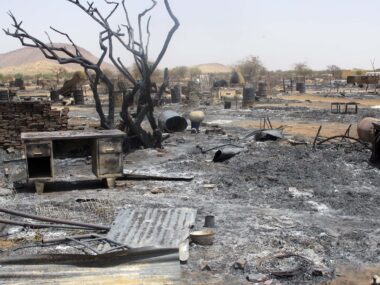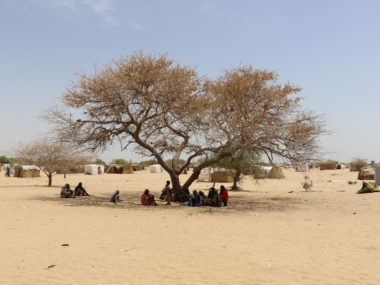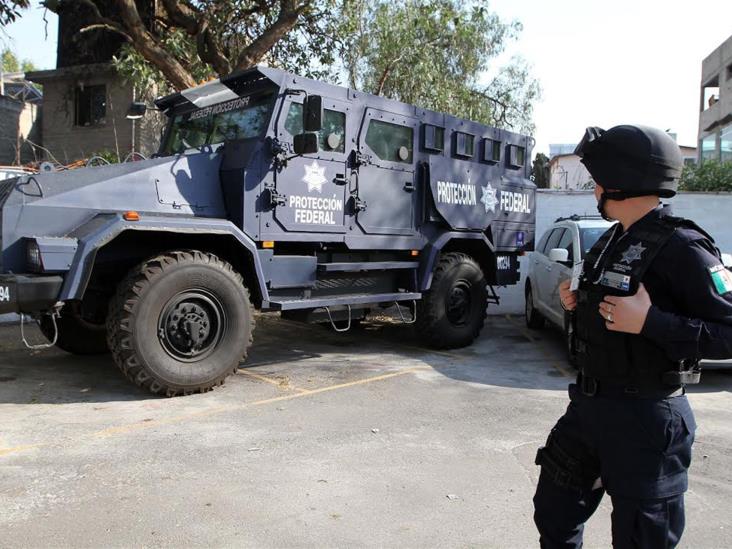Guest post by Gemma Dipoppa, Guy Grossman, and Stephanie Zonszein
During his speech commemorating the one-year anniversary of the COVID-19 pandemic, President Biden condemned the xenophobic attacks against Asian-American communities that have taken place in its aftermath. Less than one week after that speech, the lives of six women of Asian descent were taken by a gunman. Reports of hateful behaviors toward Asians in the US have surged during the pandemic; according to Stop AAPI Hate, nearly 3,800 incidents have been reported since March 2020.
One might think that this is a US-specific problem: the US history of conceiving Asian descent communities as foreign, dirty, and disease-ridden goes way back to the 19th century. Alongside this longstanding racial animus, COVID-19 hit during one of the most polarizing elections in the history of the country. Former President Trump had an explicitly anti-Chinese agenda and weaponized the disease to attack China and Chinese people. Is the recent wave of hate crimes against Asians a Trump effect? Is the increasing rate of hate crimes against people of Asian descent a US-specific phenomenon, or a more general trend?
In a recent paper, we consider the case of Italy, the first Western country hit by COVID-19 and a place—like some other European countries—where support for extreme right-wing parties has been rising. While Italy has no political party with an explicitly anti-Chinese agenda, the association between China and COVID-19 was established at the beginning of the outbreak by media coverage of the pandemic’s origin Wuhan, and the fact that the first confirmed COVID-19 cases in Italy were two Chinese tourists.
Using data curated by Lunaria, an Italian nonprofit, we studied the incidence of hate crimes from 2007 to March 2020, extracting information from the description of the crime to identify the ethnic background of the victim. We found that hate crimes against Asians increased eightfold with the onset of COVID-19. This pattern was only visible for hate crimes against people of Asian origin, suggesting that there was no generalized increase in violence against migrants. Rather, attacks were targeted at the group associated with the origin of the pandemic. The increase in hate crimes against people of Asian origin was largest in February 2020, and decreased in March, when the country entered a strict national lockdown.
The surge in hate crimes against Asians is thus not a US-only phenomenon. But what triggered this surge?
COVID-19 had two major effects: first, it produced a sweeping health crisis. Based on research on the Ebola crisis, this could have triggered fear of infection, particularly fear of being in close proximity to “others” associated with the disease origin, and in more extreme cases violence against members of those groups. Second, COVID-19 caused an economic crisis and an accompanying increase in unemployment, especially in hospitality sectors such as tourism, transportation, and restaurants. Past research has shown that economic distress can, under certain conditions, lead members of a dominant group to commit hate crimes against marginalized minority groups. Such violence is explained as a means of protecting the dominant group’s privileged status, or as a way to preserve the group’s collective self-esteem (i.e., by assigning blame to the minority group).
Did the health and economic crises cause this dramatic surge in violence against Asians? To answer this question, we looked at variations in hate crimes in Italy’s 8,000 municipalities—especially in municipalities most exposed to COVID-19-related health and unemployment threats. Interestingly, we found no localized effect of the health threat—i.e., variation in COVID-19 mortality didn’t appear to be driving the rise in anti-Asian hate crimes in some Italian localities versus others. This could be because the age group most likely to commit hate crimes (18–35 year old males) was not at a high risk of dying from COVID-19, or because the fear of dying from COVID-19 was so ubiquitous, even in places where mortality was lower.
By contrast, we found that the increase in hate crimes was significantly higher in places that suffered a relatively larger unemployment shock, suggesting that members of an “out-group”—in this case, the Asian community—can be used as scapegoats for job loss. Scapegoating “others” allows members of a majority dominant group to cope with possible decline in self (and group) esteem during times of economic hardship.
But what is triggering rage and directing it towards a specific group? The literature on hate crimes suggests that most often there is somebody or something mobilizing rage and activating it into hateful behavior. We considered three possibilities in our research in Italy: 1) individuals’ pre-existing prejudice, which might get activated during a crisis, 2) a local political context legitimizing xenophobic behaviors—specifically, we considered whether a municipality has a far-right mayor, and 3) a change in national discourse that may have legitimized Sinophobia; we looked at discourse on Twitter and classify tweets as anti-Chinese using supervised machine learning algorithms.
We did not find that individual prejudice or national rhetoric played a significant role in triggering hate, but we did find strong evidence that, in municipalities where COVID-19 caused a relatively large increase in unemployment, there was a much larger increase in hate crimes if the mayor hailed from a far-right political party. This suggests that a city government sympathetic to groups that exclude racial and ethnic minorities might enhance hate crimes by implicitly or explicitly legitimizing xenophobia.
The surge in crimes against Asians in the aftermath of the COVID-19 pandemic should be thought of as a generalized phenomenon driven in part by the economic grievances caused by pandemic-related unemployment. This in turn is clearly exacerbated by some opportunistic political elites—in the US and other countries, as well.
While relatively rare events, hate crimes are extremely consequential. Victims of hate crimes have been shown to change the way they dress, the paths they take to go to work, and to make costly decisions such as relocating to migrant neighborhoods and withdrawing their children from public schools (see for example, here and here). There is now robust evidence that COVID–19 had a disproportionately negative impact on the most marginalized groups: women have been more likely to lose their jobs; people of color and the less wealthy are more likely to contract the virus and die; and poorer countries have (much) less access to vaccinations. Asian communities across countries are yet another group paying a higher than due cost for this pandemic.
Gemma Dipoppa is a postdoctoral fellow at Stanford University; Guy Grossman is a professor of Political Science at the University of Pennsylvania and Stephanie Zonszein is a postdoctoral fellow of Penn’s Development Research Initiative (PDRI).






